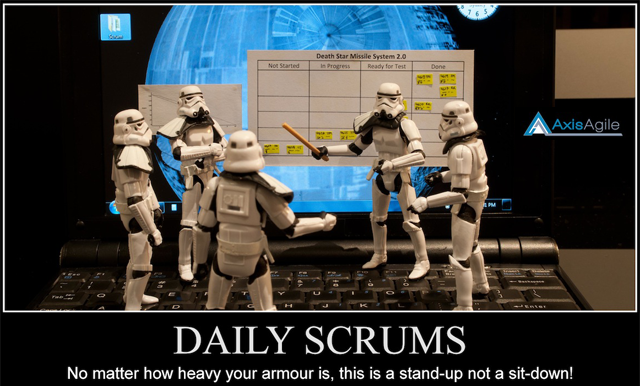Way back in the day I was a police officer. A lot of what you see on TV or in the media isn’t really a thing in police work, for example we are more likely to argue against having jurisdiction and the police chief will even appreciate when you manage to make the case that an investigation belongs to a different agency! One thing we did have, was the “daily standup” at the beginning of the shift and get updates on most wanted lists, traffic enforcement zones, drug raids, etc. It made everything so much clearer that when I went into ministry, I continued the practice!
Ministry has always had a “work from anywhere” (WFA) element. Even 20 years ago it was quite common to have pastors working from coffee shops (a cybersecurity nightmare back then 😱). Today, having pastors and other church staff work remotely is easier and more common than ever, but regardless of if church staff are working in the office or remotely, it’s often the case that not everyone is on the same page.

More and more, organizations are adopting morning standup meetings as a way to keep everyone focused and on the same page, read on for the what, why, and how of standup meetings.
What are Standup Meetings?
A standup meeting, also known as a daily scrum, is a brief, focused meeting where team members update each other on their progress and any obstacles they are facing. The name “standup” originates from the practice of participants standing during the meeting to keep it short and concise. Typically lasting around 15 minutes, these meetings are designed to foster open communication, identify roadblocks early, and maintain alignment with the team’s objectives.
The Need for Standup Meetings in Church Operations
In many ways, operating a church involves managing a variety of ongoing projects, from organizing Sunday services and weekday events to overseeing volunteer work and community outreach programs. Each project involves many moving parts and requires the coordination of different team members.
Implementing standup meetings for your church staff, whether they’re working together in an office or connecting digitally from a remote location, can provide several benefits:
Improved Communication: Regular updates keep everyone in the loop about what others are doing, fostering a sense of unity and collaboration. This is especially crucial for remote teams where isolation can be a challenge.
Problem Identification: By sharing updates and challenges, team members can identify and address potential roadblocks or dependencies early, before they become significant issues.
Accountability and Focus: Knowing they’ll update the team daily helps keep staff members focused on their tasks and encourages them to meet their commitments.
Implementing Standup Meetings (and Including Remote Staff)
With remote work becoming more prevalent, you might wonder how to hold effective standup meetings. Here are a few tips:
Choose the Right Tool: Use a video conferencing tool like Teams, Zoom, or Google Meet that allows everyone to see each other, which can help mimic the feel of an in-person meeting. Barring doing brief video calls, you can integrate tools into your collaboration platform to do asynchronous standups. I would look first at the native Updates app in Microsoft Teams (start by editing the daily update template). Having Teams enabled meeting rooms in your church can also really help bridge on-site and remote staff.
Set a Consistent Schedule: Choose a consistent time every morning that works for everyone. This regularity helps team members establish a routine and ensures they’re available and prepared for each meeting.
Keep It Super Short and Focused: Encourage each participant to stick to their updates, specifically, what they accomplished since the last meeting, what they plan to do next, and any obstacles they’re facing. Do not let this turn into a long discussion session, you should easily be getting through a standup in 5 to 15 minutes even at a relaxed pace! ⏰
Engage Everyone: Ensure everyone gets a chance to speak and that the team collectively addresses any identified issues. This is not a reporting session to the leader, but a conversation among peers. As the leader, you can still cast vision and underscore your church’s “why” to link the “how” and “what” that your staff are engaged in.
Give It a Name that Fits: You don’t have to call it a “standup meeting” so feel free to call it something that fits your church’s culture like “daily huddle,” “daily briefing,” “daily scrum,” etc.

Final Thoughts
By embracing standup meetings, churches can enhance staff communication, swiftly address problems, and maintain a focused, accountable team, even in a remote working environment. In a time when the demands on church staff are more complex than ever, standup meetings can help bring order to chaos and keep your church operating smoothly and effectively.



